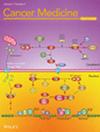Visceral Adipose Predicts Prognosis and Toxicities in Locally Advanced Bladder Cancer Patients Treated With Adjuvant Gemcitabine Plus Cisplatin Chemotherapy
Abstract
Purpose
For patients with bladder cancer (BC) undergoing radical cystectomy followed by adjuvant chemotherapy, the impact of visceral adipose tissue on prognosis and chemotherapy-related toxicities has not been well established.
Materials and Methods
From July 2013 to November 2020, 224 BC patients received adjuvant gemcitabine plus cisplatin at our institution. Computed tomography images of the patients were analyzed to calculate the visceral adipose tissue index (VATI). Patients were stratified into high- and low-VATI groups based on a predetermined cutoff value, and differences in prognosis and chemotherapy-related adverse events (AEs) between the two groups were compared.
Results
After propensity score matching, a total of 166 patients were enrolled, with 83 in the low-VATI group and 83 in the high-VATI group. The low-VATI group exhibited notably extended progression-free survival (PFS) in comparison to the high-VATI group (p = 0.044). Conversely, no substantial variation was noted concerning overall survival (OS) among the patient cohorts. In the multivariable Cox regression analysis, patients aged over 70 years (HR = 1.66, 95% CI 1.09–2.57, p = 0.04) and nodal positivity (HR = 2.98, 95% CI 1.04–4.28, p = 0.01) emerged as significant risk factors for OS. In addition to the level of VATI (HR = 2.47, 95% CI 1.02–4.21, p = 0.04), nodal positivity (HR = 4.04, 95% CI 1.30–12.56, p = 0.02) remained a significant risk factor for PFS. Regarding chemotherapy-related AEs, the most common AEs of any grade and grade ≥ 3 were hematologic toxicities. Patients in the low-VATI group exhibited a higher likelihood of experiencing grade ≥ 3 neutropenia compared to those in the high-VATI group (p = 0.04).
Conclusions
This study demonstrated that, among patients treated with adjuvant chemotherapy for locally advanced BC, patients in the low-VATI group exhibited a significantly prolonged PFS compared to those in the high-VATI group. However, no significant difference was observed in terms of OS. Regarding chemotherapy-related AEs, patients in the high-VATI group exhibited a relatively lower incidence and severity of toxic reactions.


 求助内容:
求助内容: 应助结果提醒方式:
应助结果提醒方式:


